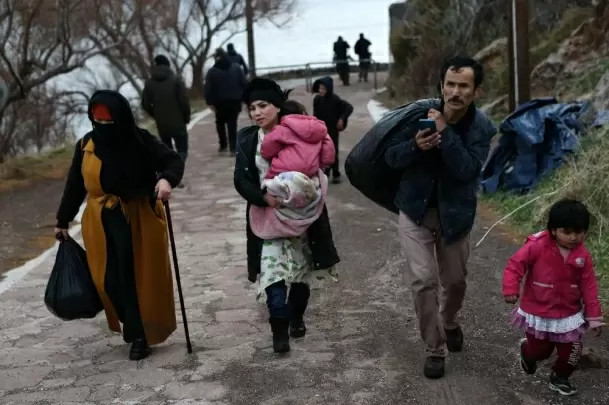Half the Afghan population is at risk
New Delhi
11-August-2021

Photo:IANS
Almost half of Afghanistans population is in need of emergency relief assistance, the International Organization for Migration (IOM) has said.
The last few days have seen deadly escalation in fighting in Helmand, Kandahar, Herat, Kunduz and Nimroz provinces, adding untold sufferings to the people in a country where over 5 million people have already been displaced internally, IOM said.
As the number of people displaced due to conflicts around the country increased to more than 359,000 newly displaced in 2021, IOM said it will continue to support the people of Afghanistan, providing emergency shelter, core relief items, emergency health services and protection assistance to the displaced persons.
Apart from the internal displacement dynamics, Afghanistan continues to see record numbers of undocumented returnees in 2021; over 680,000 Afghans returned in the first seven months of this year, according to the Border Monitoring Team of the Directorate of Refugees and Repatriation (DoRR).
"The country is also in the throes of a third wave of Covid-19 and a severe drought. These factors leave almost half of Afghanistan's population in need of emergency relief assistance, with the needs expected to continue to rise," IOM said.
In an earlier report, IOM had said that more than half of children aged 5-7 in Afghanistan are engaged in work of some kind.
Watch This TWL Video
The Covid-19 pandemic has further worsened the situation as loss of livelihoods, coupled with school closures, is likely to have precipitated increased reliance on child labour for families struggling to make ends meet.
Over 18.4 million Afghans -- almost half the population -- are now in need of humanitarian support, according to the United Nations Office for the Coordination of Humanitarian Affairs (OCHA).
This poverty, coupled with the upsurge in violence since intra-Afghan peace talks began last September, has seen unprecedented numbers of undocumented Afghan migrants returning from neighbouring Iran and Pakistan.
Between January and May 2021 alone, more than 490,000 undocumented Afghans returned -- an increase of 42 per cent over the same period in 2020, of which more than half are deportees.
"Undocumented returnees often return worse off than before they left because they have sold property or borrowed money in order to pay for their passage," noted Floriane Echegut, IOM Afghanistan's Protection Programme Manager.
"The drivers of outward migration are largely due to insecurity and lack of income, but when people are forced to return, these issues are compounded by the deteriorating situation here. Sending school-age children out to work is often essential to the survival of these families, but it places the children at significant risk," Echegut said.
Children in Afghanistan endure some of the worst forms of child labour, from being recruited into the armed conflict, to brick production, in agriculture and mines, and most visibly on the streets as beggars and porters.-IANS
More Headlines
Manglam Group Invests ₹1,000 Crore in Hospitality Expansion Across Rajasthan
Chai Kings Secures ₹24 Crore Series A Funding from AVT for Expansion
Amritsar Temple Blast: One Suspect Shot Dead, Another on the Run
Chennai Police Hunt Suspects After Brutal Kotturpuram Double Murder
Haryana BJP Leader Shot Dead Over Land Dispute On Holi: Police
Manglam Group Invests ₹1,000 Crore in Hospitality Expansion Across Rajasthan
Chai Kings Secures ₹24 Crore Series A Funding from AVT for Expansion
Amritsar Temple Blast: One Suspect Shot Dead, Another on the Run
Chennai Police Hunt Suspects After Brutal Kotturpuram Double Murder
Haryana BJP Leader Shot Dead Over Land Dispute On Holi: Police










